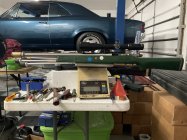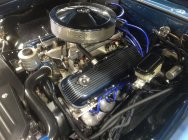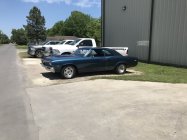Many on the Site do not remember when you could not use tuners in NBRSA and IBS Short Range Benchrest.
myself and a couple of other shooters were instrumental in getting tuners approved. I believe Dwight Scott was one of the first to come up with something.
I came up with the aluminum one piece, threaded on the barrel with a 36 tpi thread, and clamped. I then thought about incorporating some type of rubber.dampening device that would act as a buffer.
It worked. I ended up with a tuner that weighed about 5 ounces with a hard rubber marine bearing pressed on tight.
Gene Bukys came up with his design, and sold them. He always believed that a tuner simply allowed you to get as much out of a barrel as it was born with. He also believed that the “buffer” gave you a wider tune window. What it won’t do is make a mediocre barrel into a great barrel.
This is the original tuner I made years ago. I use it to fine tune after the load is right. If the Rifle seems too sensitive in the horizontal, I can adjust the tuner to get a tad of vertical, or Vice-versa.
I never got much into exactly what the tuner was doing as it relates to this discussion, all I know is that they work.
Back when we first proposed tuners to the NBRSA, there was quite a bit of opposition. At the Nationals in Raton when it was presented to the members for a vote, one very well known shooter took the microphone, looked straight at me, and said……“most of us wish you would just go away”
We didn’t, and the rule was adopted.
Since then, different people have come up with some very well thought out tuners.
this is my first tuner that I have on my 30BR VFS Rifle. In the picture, you can see some of my other designs on other rifles.
View attachment 1313275













